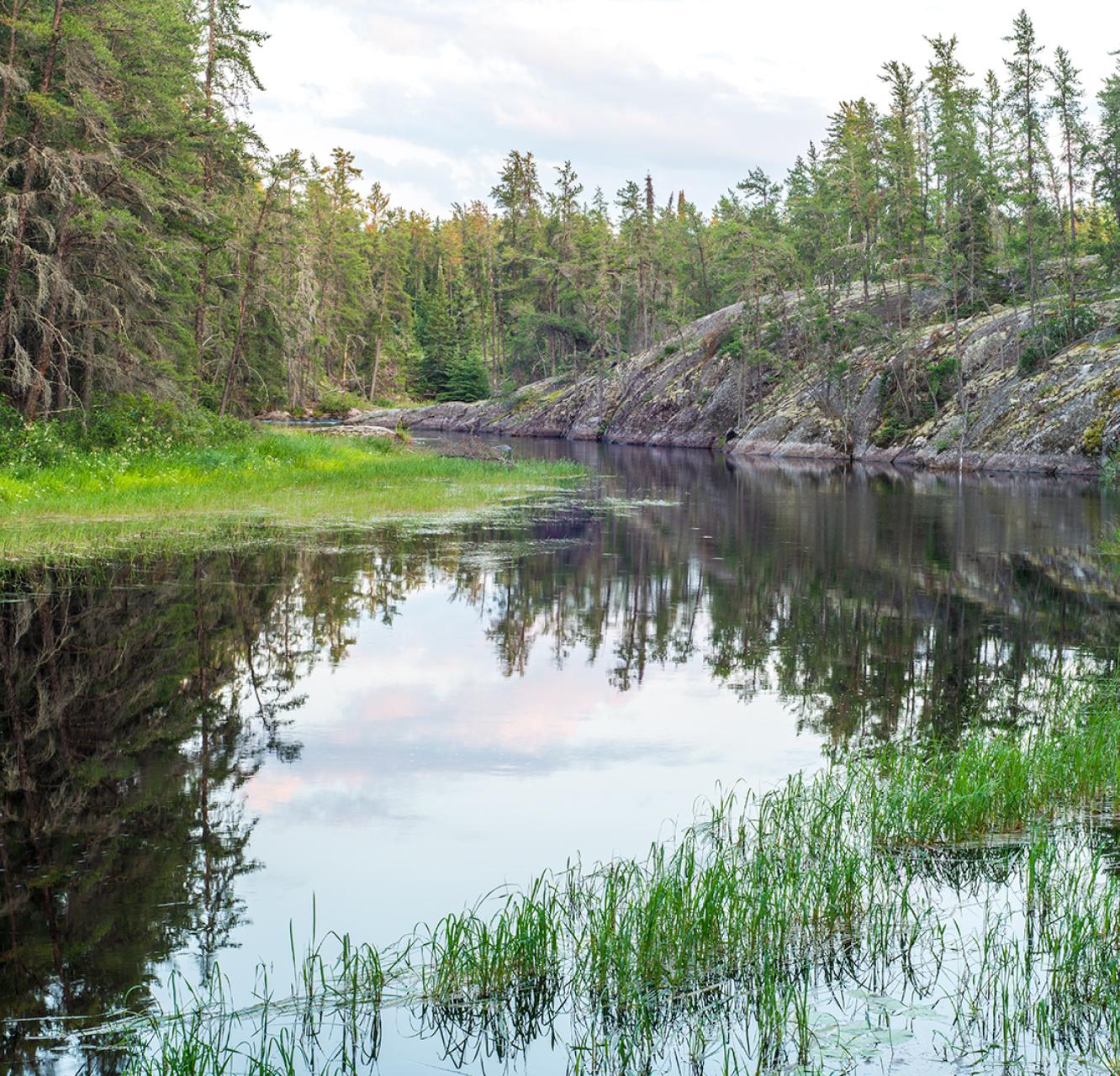Protecting the Heart of the Boreal from Bipole 3
Thursday, September 22, 2011
This wasn’t a friendly crowd. In fact, they had a senseless anger that not one of them would have displayed in a personal encounter, but together they felt they could exude.
The Bipole 3 Coalition had planned this protest, but concerned environmentalists who responded to a hastily advertised counter-rally to support the Heart of the Boreal were in attendance. The Coalition folks had the mic and podium, though.
When we arrived, the speaker at the mic was running down a list of all the problems with putting a hydro corridor down the west side of Manitoba, mixed in with a few of the typical Bipole 3 myths about the East Side. As we soon found out, the crowd was not receptive to anything other than their predetermined version of the issue. For us, however, this is not about politics or partisan bickering. At stake is Manitoba’s greatest natural treasure, a local opportunity to preserve a global treasure. When all of the politicians who are currently running for office in this Manitoba election are long gone, the impact of our decisions concerning the Heart of the Boreal will still be resonating.
A retired Manitoba Hydro vice-president was soon at the mic, explaining that we should run the line down the east side of Lake Winnipeg, and an all-weather road with it. At this point I decided to say something, having heard all too many Bipole myths presented as unchallenged facts thus far. When the speaker paused for a moment, I mentioned (some say shouted) from behind the 40 farmers forming the audience, that this discussion wasn’t about a road, and the road wasn’t part of a hydro line project (this is one of the most popular myths that is brought up regularly here, and can be debunked here). I mentioned that the Heart of the Boreal was one of the most important forests left intact on our planet. I tried to give a comparison between the quality of water in the rivers and lakes on the East Side and the water in the ditches and rivers surrounding their farms, but at this point the swears and the yelling drowned me out. Irrational arguments and insults were aimed at me. I attempted to show those arguing around me a map highlighting the planned all-weather road compared to the Bipole route, but they were not interested in these facts, and when I tried to make my way closer to the speaker to ask questions I was physically accosted. I saw one wide-eyed, diminutive young student attempting to physically restrain an angry farmer, which I expect was a traumatic experience for her.
After being denied an opportunity to get any closer to the microphone from the back, I found a spot off to the side of the podium to watch and listen. It was here that I found an opportunity to speak one-on-one with Mr. McFadyen, leader of the PC Party of Manitoba, who has promised to bulldoze the hydro line through the East Side.
I leaned over to Mr. McFadyen as he was exiting past me, and mentioned that both times I tried to have a public discussion about the Heart of the Boreal around him I was assaulted (read about the last encounter here), and asked him why he didn’t want to speak with environmentalists. He must have felt obliged to listen after an introduction like that, and to his credit, stopped to talk.
I asked why he wouldn’t explain to environmentalists his position on running a hydro line through the east side, (as I asked in an open letter to him found here, with his response posted below) and why he wouldn’t meet with us to publicly discuss the East Side. To my surprise, he said he would be happy to sit down with us. He said he had already sat down with environmental groups, but was unable to name which ones. He thought he met with the Canadian equivalent of the U.S. NRDC, and Sierra, and he definitely recalled the David Suzuki Foundation. As he had brought it up, I mentioned that David Suzuki was a respected Canadian and environmentalist, and queried him about David Suzuki’s position. David Suzuki has stated that the East Side is invaluable as an intact forest, and priceless (read an opinion piece he recently published on the East Side here). Mr. McFadyen had no comment for this, even though seconds earlier he had been telling the crowd that routing a hydro corridor through the East Side was the environmental choice and all the experts agreed on this. Instead, Mr. McFadyen pressed me on the road that was being planned for the Heart of the Boreal. I asked him what the road was for, and he said for development. I corrected him and stated that the road is a community access road that was becoming necessary in a warming world, and asked him if he recalled the winter road melt in March 2010, when the shipping season to these remote communities lasted all of 11 days, rather than the usual 42, and nearly 200 people had to be rescues at great cost as the winter road turned to swamp underneath them. I then asked if Mr. McFadyen understood that the effects of additional developments in an intact, healthy forest are not just cumulative, but are actually exponential. I asked him if he was familiar with the recently released federal recovery strategy for woodland caribou, where it states that caribou in the Heart of the Boreal (the Atikaki-Berens range) move from 8-60 kilometers away from a clearing. Instead of losing a mere 66-meter swath of forest that is being bulldozed, the caribou will likely avoid the area by at least 8 kilometers, times the approximately 600-kilometer length of the line. At this point, Mr. McFadyen interjected that I had my caribou facts wrong, but I continued by mentioning that scientists have said the intact Heart of the Boreal is the last great hope and stronghold for woodland caribou. I asked Mr. McFadyen if he felt that in 100 years his grandkids would like to have woodland caribou in the forests, saying that scientists had predicted the extinction of woodland caribou by the turn of the century if we continued our pace of development. Mr. McFadyen deflected this by again pressing me on why I wasn’t complaining about the planned all-weather road. I again stated that this road is for community access. If the winter road system is no longer feasible, this is one of the only options for community access. I also stressed that there is no option for community road access other than through the east side. We don’t have a choice about which side of the lake to run a community access road on, it has to be to those communities. But we do have a choice on the hydro line. By this time, some media had begun recording our conversation, and you can see a short clip of me telling Mr. McFadyen that there are other options for the hydro line in this CBC video clip. Mr. McFadyen’s handler led him away at this point, so I guess we can resume our chat when I and my fellow environmental colleagues sit down and have the public discussion he agreed to.
What we experienced at this rally is no more or less than we expected. The proponents of bulldozing a hydro transmission corridor through one of Earth’s life-support systems are willing to perpetuate myths and ‘bend’ facts to make their case, and willing to present illogical arguments to gain support. But the facts need to be presented, as often as necessary, so Manitobans can make an informed choice about preserving the Heart of the Boreal, our province’s gift to the world.
Our job remains tough, as committed environmentalists, ecologists; as responsible Manitobans, Canadians and citizens of our planet. In the long-term, we need to reign in wilderness development, especially when we have an option, even a slightly more costly option. Protecting the Heart of the Boreal, for all it does for us and all it promises to keep doing if left intact, is a job I will keep doing. And I need your help.
— Eric






